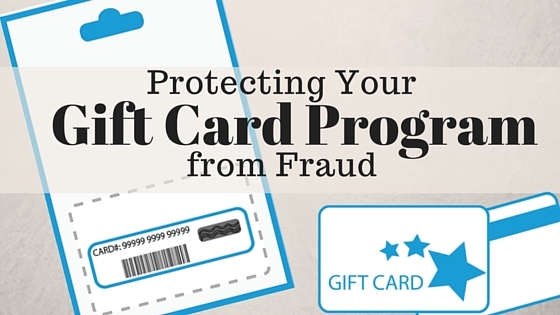Can CPS Cards help with your gift card program? Contact us or call 888.817.8121 to request a free quote.
Protecting Your Gift Card Program from Fraud
Consumers will spend more than $100 billion on gift cards this year in the U.S., double of what they spent just a decade ago. With the expansion of third-party merchandising, purchasing a gift card has become substantially easier over the last several years. Now, consumers can walk into virtually any store and have their pick of gift cards from dozens of retailers. In addition, merchants have elevated their merchandising efforts within their own brick-and-mortar stores in order to tap into this lucrative revenue stream. However, with so many cards readily available to consumers, the risk for gift card fraud has been on the rise in recent years.
How Gift Cards Get Stolen
How gift cards are stolen has changed over time, due to more advanced POS systems and improved card packaging techniques. Criminals adjust their tactics to try to outwit employees, consumers and retailers. Here are just a few ways that in-store cards are either stolen or cloned today:
They steal numbers.
Since gift cards are now used both in-store and online, most retailers print the gift card number on the card, in addition to encoding it within a mag stripe or barcode. Criminals will steal those numbers by copying or taking a picture of them in store. They will also remove the cards from the store in bulk quantities, use a cheap mag stripe reader to clone the numbers that are encoded, and then return the cards to the store and back onto the rack. In either scenario, the thief will continually monitor gift card balances on the merchant’s website until the card has been activated, and then either use or sell the gift card(s) before they can be used by the legitimate customer.
They switch cards.
Unfortunately, employees account for more than 60% of gift card fraud in the U.S. One tactic involves switching a customer’s gift card with a zero balance card. Often, customers who use gift cards to make a purchase will ask the cashier to discard the card once the balance is zero. Instead of trashing the card, the cashier will hold onto it. When another customer comes along and uses a gift card (and has a balance left on the card after they use it), the employee will switch the customer’s card, which still carries a balance, with a zero balance card they have hidden off to the side.
They outwit the POS system
Another employee scheme for stealing gift cards lies in them understanding how the POS system works. Many will “trick” the system by activating a new gift card and then performing a hard shut down of the register before tendering the sale. The card is then activated, but the register shows no record of the sale. A second tactic employees use is to purchase a gift card at one register. They then use that gift card to buy another gift card at a different register and then come back to the first register and “post void” the original gift card sale.
How to Protect Against Gift Card Fraud
Use anti-theft barriers.
Deter thieves from stealing by using PIN numbers with scratch-off labels. Since most gift cards use a human readable for those making online purchases, a PIN number provides an added level of security since a missing scratch-off label can be easily spotted by the cashier.
Train your employees.
All employees should be trained on gift card fraud and the tactics thieves use to cheat the system. It will not only alert them to look for evidence of fraud, but it will also make them aware that they are on your radar as well.
Monitor your gift card racks.
Keeping gift cards behind the counter is not always the best way to boost sales, so most merchants display them on the showroom floor. Keeping gift cards within eyesight of the registers will allow your employees to easily monitor them. Also, video surveillance will help to detect any unlawful activity during or after fraud. Keep your gift card displays clean so it will be noticeable if a large number of cards are missing.
Know your POS system.
Understanding how your POS system processes gift cards will help you to quickly identify possible fraud. If you detect many voided purchases or a history of system shut-downs, it may be a sign of gift card theft. Also, compare the number of cards activated (with a report from your card processor) against the number of cards sold to detect discrepancies.
Educate customers.
Through the use of signage or your cashiers, make customers aware of the signs of gift card tampering – a missing scratch-off label, torn carriers, etc.– and urge them to keep the activation receipt with the card. No customer wants to give a gift card only to find out that it has a zero balance.
In order to curb gift card fraud, both you and your employees need to be vigilant in identifying the signs of fraudulent behavior. All it takes is one or two bad gift card experiences for a customer to think poorly of your brand. Being proactive is key to continued gift card sales success.
